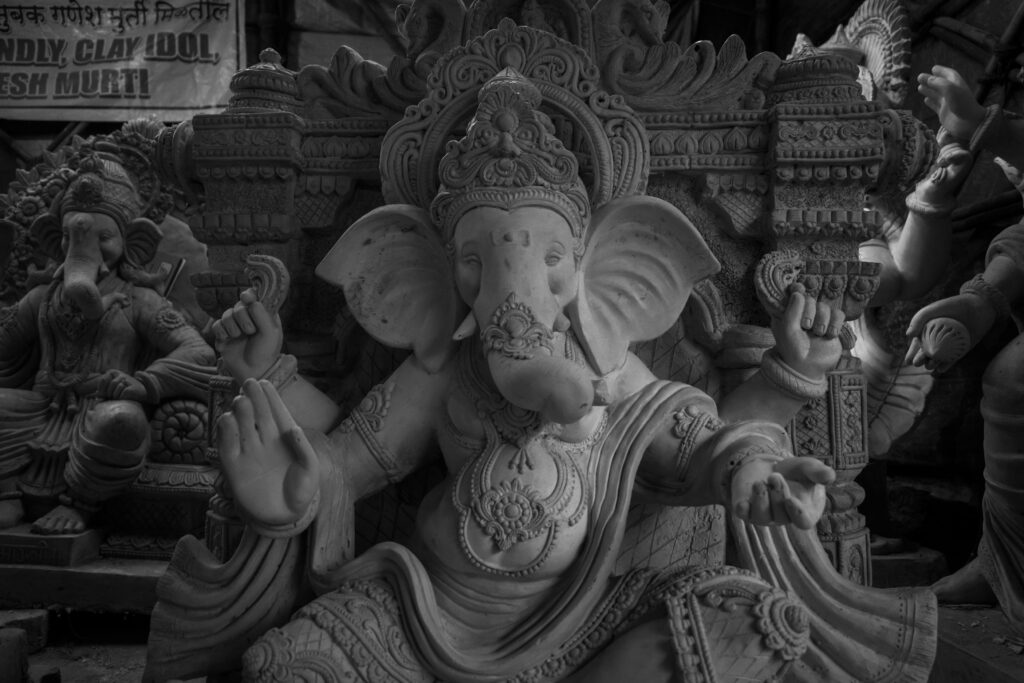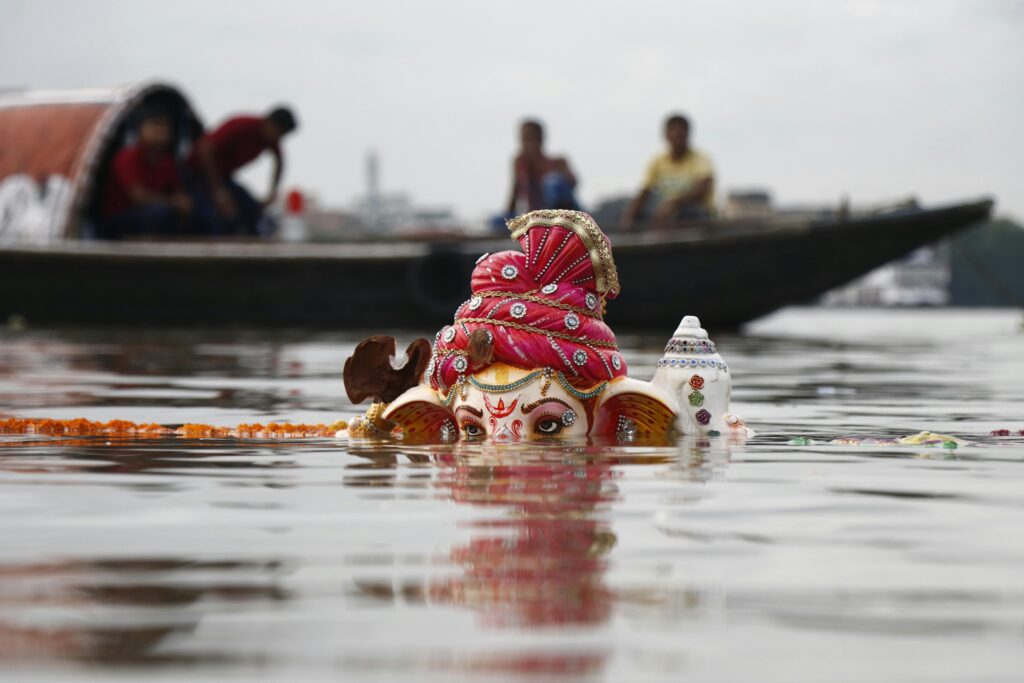“Lord Ganesha: Celebrating His Birth and Blessings During Ganesh Chaturthi”
“May Lord Ganesha remove all obstacles and guide you on the path to success and wisdom.”

The History of LORD GANESHA and the Celebration of Ganesh Chaturthi
The Origin of LORD GANESHA
Lord Ganesha, also known as Ganpati, is one of the most revered and beloved deities in Hinduism. Recognized by his elephant head, Ganesha is worshipped as the remover of obstacles, the patron of arts and sciences, and the deity of intellect and wisdom.
According to Hindu mythology, LORD Ganesha is the son of Lord Shiva and Goddess Parvati. One popular story of his origin tells that Parvati created Ganesha from clay and breathed life into him. She then assigned him the duty of guarding her chambers. When Shiva returned home and found an unknown boy preventing him from entering, he became enraged and severed Ganesha’s head. Parvati was devastated, and to console her, Shiva replaced Ganesha’s head with that of an elephant, thus bringing him back to life.
The Significance of Ganesh Chaturthi
Ganesh Chaturthi, also known as Vinayaka Chaturthi, marks the birth of Lord Ganesha. This festival is celebrated with great fervor and devotion, especially in the Indian states of Maharashtra, Karnataka, Gujarat, and Andhra Pradesh, among others.
The celebration of Ganesh Chaturthi spans over ten days, beginning on the fourth day (Chaturthi) of the Hindu lunar month of Bhadrapada, which usually falls in August or September. The festival culminates on the fourteenth day, known as Anant Chaturdashi.
Why We Celebrate Ganesh Chaturthi
- Welcoming Ganesha: During Ganesh Chaturthi, devotees bring home beautifully crafted Ganesha idols, symbolically inviting the deity into their homes and hearts. Devotees place the idols on decorated altars, filling the atmosphere with the chanting of prayers, singing of hymns, and the scent of incense. and flowers.
- Prayers and Offerings: Devotees perform elaborate rituals (pujas) and offer a variety of sweets, especially modaks. which they believe to be Ganesha’s favorite.
These offerings represent the devotees’ gratitude and seek blessings for wisdom, prosperity, and the removal of obstacles. - Community and Cultural Activities: Ganesh Chaturthi is a community event. Organizers set up public pandals (temporary stages) and place large Ganesha idols on them. These spaces become centers of cultural activities, including music, dance, and theatrical performances, fostering a sense of community and shared devotion.
- On the final day of the festival, devotees take the idols in grand processions to nearby water bodies for immersion (visarjan).This act symbolizes the cycle of birth and death, and believers hold that Ganesha returns to Mount Kailash to be with his parents, Shiva and Parvati. The immersion also signifies the deity’s departure; thus, it carries away the misfortunes of his devotees.
.

The Modern Celebration
Ganesh Chaturthi has transformed from a private family celebration into a major public festival. In the late 19th century, Lokmanya Tilak turned it into a large event to promote unity and nationalism. Today, the festival symbolizes cultural and religious pride, uniting people across regions and communities..
Conclusion
Ganesh Chaturthi brings joy, devotion, and cultural expression. By celebrating Lord Ganesha’s birth, devotees honor him and embrace his values of wisdom, prosperity, and obstacle removal. The festival’s rich history and vibrant traditions inspire and unite millions, making it a cherished celebration in Hinduism.
for more visit Wikipedia

0 Comments